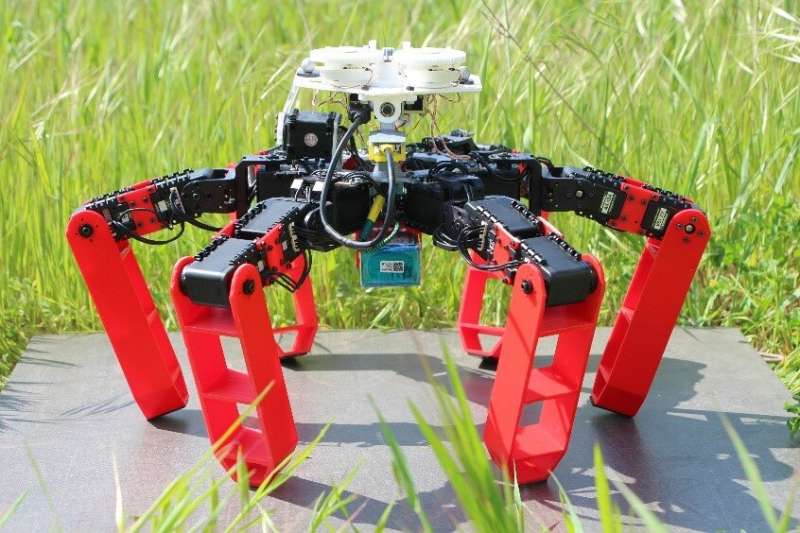Antbot, the first walking robot that moves without GPS. Credit: Julien Dupeyroux, ISM (CNRS/AMU)
Desert ants are extraordinary solitary navigators. Researchers at CNRS and Aix-Marseille University, in the Institut des Sciences du Mouvement—Étienne Jules Marey (ISM), were inspired by ants as they designed AntBot, the first walking robot that can explore its environment randomly and navigate home automatically without GPS or mapping. This work, published in Science Robotics, opens up new strategies for navigation in autonomous vehicles and robotics.
Human eyes are insensitive to polarized light and ultraviolet radiation, but that is not the case for ants, who use it to locate themselves in space. Cataglyphis desert ants in particular can cover several hundreds of meters in direct sunlight in the desert to find food, then return in a straight line to the nest without getting lost. And they are most active during times of day when heat would make pheromone trails evaporate. Their extraordinary navigation talent relies on orienting themselves using the sky's polarized light, and measuring the distance covered by counting steps and incorporating the rate of movement relative to the sun measured optically by their eyes. Distance and heading are the two combined pieces of information that allow them to return directly to the nest.
AntBot, the new robot designed by CNRS and Aix-Marseille University (AMU) researchers at ISM, copies the desert ants' exceptional navigation capacities. It is equipped with an optical compass to determine its heading by means of polarized light, and an optical movement sensor directed to the sun to measure the distance covered. Armed with this information, AntBot can explore its environment and to return on its own to its base with precision of up to one centimeter after having covered a total distance of 14 meters. Weighing only 2.3 kg, this robot has six feet for increased mobility, allowing it to move in complex environments where deploying wheeled robots and drones can be complicated, including disaster areas and rugged terrain.
The optical compass developed by the scientists is sensitive to the sky's polarized ultraviolet radiation. Using this "celestial compass," AntBot measures its heading with 0.4 degrees of precision in clear or cloudy weather. The navigation precision achieved with these minimal sensors proves that bio-inspired robotics has immense capacity for innovation.
More information: J. Dupeyroux el al., "AntBot: A six-legged walking robot able to home like desert ants in outdoor environments," Science Robotics (2019). robotics.sciencemag.org/lookup … /scirobotics.aau0307
Journal information: Science Robotics
Provided by CNRS






















